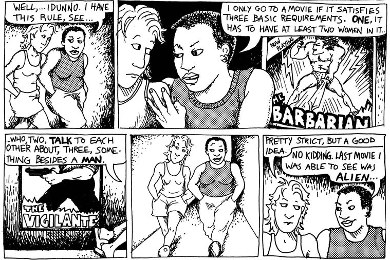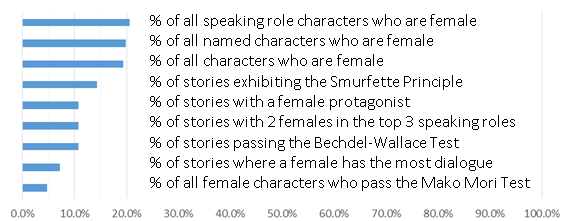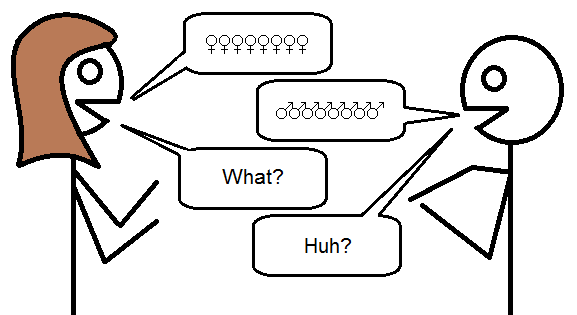Here’s a touchy topic. Do my stories past the Bechdel-Wallace Test? How about other similar tests? How important are these tests?
What is the Bechdel-Wallace Test? It purports to measure the degree to which a work of fiction features female characters in their own right, and not just as characters who are there to react to males. A story passes the Bechdel-Wallace Test if (1) there are at least two women in it, (2) who talk to each other, (3) about something besides a man.
 The test got its name from Alison Bechdel, who writes the comic strip Dykes to Watch Out For. Bechdel credits her friend Liz Wallace for the idea, too.
The test got its name from Alison Bechdel, who writes the comic strip Dykes to Watch Out For. Bechdel credits her friend Liz Wallace for the idea, too.
Other, related measures include the percentage of female speaking roles, the percentage of named characters who are women, the percentage of female characters overall, whether the protagonist is a woman, whether 2 out of the top 3 speaking roles are for women, and whether the character with the most dialogue is a woman. Then there’s the Smurfette Principle Test—whether there is only one female in an otherwise all-male group or ensemble of characters. And we shouldn’t forget the Mako Mori Test—whether a female character has a narrative arc that is not about supporting a man’s story.
With some trepidation, I’ll show you how my published stories faired in these tests. Note: I’m counting the two versions of “Alexander’s Odyssey” as different stories, because I substantially revised it for its second publication. I’m counting “Vessel” and “Last Vessel of Atlantis” as a single story because I did not revise it much for its second publication. That makes the number of stories 28.

Not great scores, I’ll grant you, given that women are 50% of the population. For the record, I have nothing against women. In partial defense of my low scores on these tests:
- I write a lot of alternate history fiction involving technology, and historically women have not figured as prominently as men in dealing with technology,
- Very little of the fiction I grew up and loved reading would pass these tests, and
- As a male writer, it is more difficult for me to craft a believable and relatable female character.
There is also some dispute about the tests themselves. A poorly written story could score higher than a well-written one. A writer bent on passing the tests could do so without necessarily representing female characters in a good light. I mention this not to denigrate the tests, but to point out the difficulty of accurate metrics in the social sciences. If you articulate what you truly want to measure, then any metric you come up with will be unwieldy and possibly subjective. If you strive to get an easy-to-calculate, objective metric, then it may only be a rough gauge of the truth you’re after.
Those are only excuses, though. I can do better, and I will. Not for the purpose of becoming a feminist writer, but to have my writing more closely align with the human condition. In short, I should be Amphitrite’s Scribe in addition to being—
Poseidon’s Scribe

 This blog post comes with a giant disclaimer. I’ll be discussing general tendencies, not rules. Rather than concentrating on having a female character “talk like a woman,” focus instead on having her talk consistently with her personality, age, nationality, time period, upbringing, geographical location, and gender. In other words, the way your characters talk depends on a lot more than gender.
This blog post comes with a giant disclaimer. I’ll be discussing general tendencies, not rules. Rather than concentrating on having a female character “talk like a woman,” focus instead on having her talk consistently with her personality, age, nationality, time period, upbringing, geographical location, and gender. In other words, the way your characters talk depends on a lot more than gender.